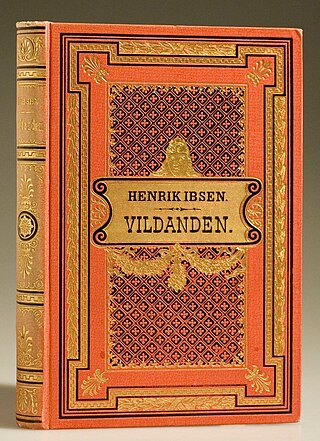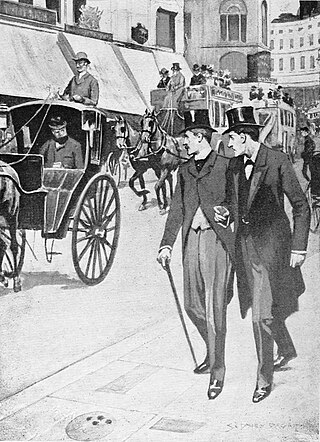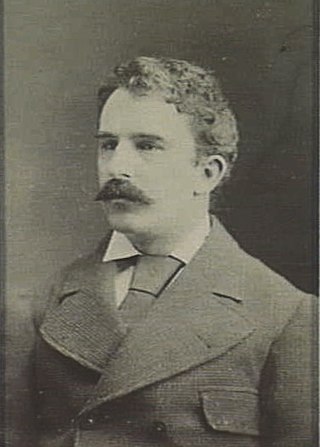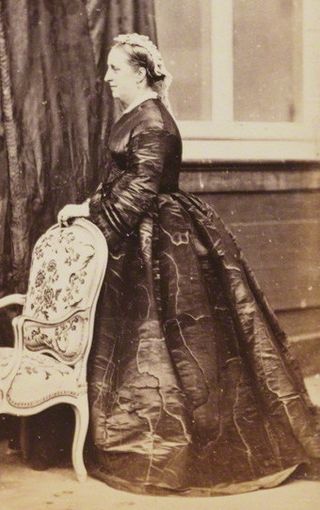
Sense and Sensibility is the first novel by the English author Jane Austen, published in 1811. It was published anonymously; By A Lady appears on the title page where the author's name might have been. It tells the story of the Dashwood sisters, Elinor and Marianne as they come of age. They have an older half-brother, John, and a younger sister, Margaret.

Frances Eliza Hodgson Burnett was a British-American novelist and playwright. She is best known for the three children's novels Little Lord Fauntleroy (1886), A Little Princess (1905), and The Secret Garden (1911).

Cabiria is a 1914 Italian epic silent film, directed by Giovanni Pastrone and shot in Turin. The film is set in ancient Sicily, Carthage, and Cirta during the period of the Second Punic War. It follows the story of an abducted little girl, Cabiria, and features an eruption of Mount Etna, religious rituals in Carthage, the alpine trek of Hannibal, Archimedes' defeat of the Roman fleet at the Siege of Syracuse and Scipio maneuvering in North Africa. Apart from being a classic on its own terms, the film is also notable for being the first film in which the long-running film character Maciste makes his debut. According to Martin Scorsese, in this work Pastrone invented the epic movie and deserves credit for many of the innovations often attributed to D.W. Griffith and Cecil B. DeMille. Among those was the extensive use of a moving camera, thus freeing the feature-length narrative film from "static gaze".

Sarah Baartman, also spelled Sara, sometimes in the diminutive form Saartje, or Saartjie, and Bartman, Bartmann, was a Khoikhoi woman who was exhibited as a freak show attraction in 19th-century Europe under the name Hottentot Venus, a name that was later attributed to at least one other woman similarly exhibited. The women were exhibited for their steatopygic body type uncommon in Western Europe that not only was perceived as a curiosity at that time, but became subject of scientific interest as well as of erotic projection.

The Wild Duck is an 1884 play by the Norwegian playwright Henrik Ibsen. It explores the complexities of truth and illusion through the story of a family torn apart by secrets and the intrusion of an idealistic outsider. It focuses on the Ekdal family, whose fragile peace is shattered by Gregers Werle, an idealist who insists on exposing hidden truths, leading to tragic consequences. The play was written in a realistic style, but literary scholars have pointed out the play's kinship with symbolism. It blends themes such as deception, betrayal, and the disillusionment of modern life with moments of comedy and satire, and is considered the first modern masterpiece in the genre of tragicomedy. The Wild Duck and Rosmersholm are "often to be observed in the critics' estimates vying with each other as rivals for the top place among Ibsen's works".

Daisy Miller is a novella by Henry James that first appeared in The Cornhill Magazine in June–July 1878, and in book form the following year. It portrays the courtship of the beautiful American girl Daisy Miller by Winterbourne, a sophisticated compatriot of hers. His pursuit of her is hampered by her own flirtatiousness, which is frowned upon by the other expatriates when they meet in Switzerland and Italy.

Pittington is a village and civil parish in County Durham, in England. It is situated a few miles north-east of Durham. The population as taken at the 2011 census was 2,534.

Ghost Talker's Daydream, known in Japan as Vulgar Ghost Daydream, is a shōnen manga written by Saki Okuse and illustrated by Sankichi Meguro, set in modern Japan. There are 10 volumes in total, and the series was also adapted as a four episode OVA. The English version released by Geneon changed the title to Ghost Talker's Daydream, which is not a direct translation of the formal manga title.

For the Term of His Natural Life is a story written by Marcus Clarke and published in The Australian Journal between 1870 and 1872. It was published as a novel in 1874 and is the best known novelisation of life as a convict in early Australian history. At times relying on seemingly implausible coincidences, the story follows the fortunes of Rufus Dawes, a young man transported for a murder that he did not commit. The book clearly conveys the harsh and inhumane treatment meted out to the convicts, some of whom were transported for relatively minor crimes, and graphically describes the conditions the convicts experienced. The novel was based on research by the author as well as a visit to the penal settlement of Port Arthur, Tasmania.

John Blaxland was a pioneer settler and explorer in Australia.
The Northern Lass is a Caroline era stage play, a comedy by Richard Brome that premiered onstage in 1629 and was first printed in 1632. A popular hit, and one of his earliest successes, the play provided a foundation for Brome's career as a dramatist.

The amateur detective, or sometimes gentleman detective, is a type of fictional character. He has long been a staple of crime fiction, particularly in detective novels and short stories set in the United Kingdom in the Golden Age. The heroes of these adventures are often members of the British gentry or gentlemen by conduct. They are sometimes contrasted with professional police force detectives from the working classes.

Alfred Dampier was an English-born actor-manager and playwright, active in Australia.

The Romantic Story of Margaret Catchpole is a 1911 Australian silent film directed by Raymond Longford and starring Lottie Lyell. It is based on the true story of Margaret Catchpole, an adventurer and convict. Only the first 24 minutes of the 50-minute runtime survives today.

Venus is a 1996 play written by American playwright Suzan-Lori Parks about the life of Khoekhoe woman Sarah Baartman. Set during the 19th century, the play opens in South Africa where Baartman was born, before transitioning to Europe as Baartman begins to perform in freak shows in London. The play then transitions to Paris where she continues her freak show act before dying in 1815 after being under the study of a group of French scientists led by Georges Cuvier. Her deceased body becomes the subject of a pseudoscientific autopsy that focuses on Baartman's steatopygia– a condition which Cuvier, uses to his academic advantage. Parks' work is not intended to be historically accurate, but rather uses the concept of Baartman's career to explore colonialism, racialization, and the historical sexualization of Black women; as Parks explains, "most of it's fabricated... It's questioning the history of history... It embraces the unrecorded truth." Venus won 2 OBIE Awards in 1995-1996.

Augusta Legge, Countess of Dartmouth (néeLady Augusta Finch; 18 February 1822 – 1 December 1900 was an English noblewoman and philanthropist.
The Warning is a melodrama written by "Henry Bosnell" on the subject of white slavery and promoted as a remedy to an urgent social evil. It opened at the Little Theatre, Sydney on 22 November 1913 and ran for six weeks to good houses.
Colonial Experience is a 1868 Australian stage play by Walter Cooper. It was Cooper's first play and the only one known to have survived in script form.














